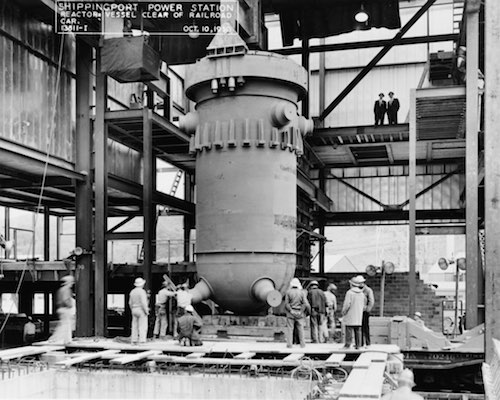The Shaky Promise of the First Atomic Power Plant

Nuclear energy seemed to have a bright future in 1957. In just 12 years, scientists had transformed the reaction that destroyed Hiroshima and Nagasaki into heat and light for in the Pittsburgh area, home to the world’s first full-scale atomic power plant built for civilian purposes.
But in a 1958 Post article about this first nuclear energy plant, there were also reports of misgivings and concerns over this new form of power.
Some were easily disproved, like the complaint that power generated at nuclear plants made electric lights change colors, or that energy travelling through power lines would “atomize” people in their homes.
Other concerns couldn’t be so easily dismissed, particularly the worries about safety and cost. The experience from a handful of nuclear-energy plants was causing “a lot of hard reappraising… and a certain amount of disillusionment,” according to author Steven M. Spencer.
Of the hundreds of companies which had reserved expensive tickets to the bright and promising atomic future, a number have been discouraged by unanticipated technical hurdles and soaring costs — 50 to 100 per cent or more in two years — and have canceled their reservations.
The greatest technical hurdles involved safety: avoiding a meltdown of the reactor core and safely disposing of radioactive materials. Spencer carefully delineates the many safety features of the reactor, including some that today sound alarming: the steel container that houses the reactor is checked for leaks using soap bubbles, as one would for a deflated tire. Despite the many precautions, one engineer observed, “Some fool can and usually does prove that nothing can be made foolproof.”
As the world has confronted nuclear plant disasters from Three Mile Island to Chernobyl to Fukushima, safety remains the biggest hurdle, although no longer the only one. Nuclear power now has to compete with more plentiful sources like natural gas, and increasingly affordable options such as wind and solar.
But until those alternatives grow even less expensive and easier to use, nuclear energy remains too powerful to abandon. Technology is still advancing that make nuclear plants increasingly safe. As an April 2017 Forbes article notes, “next-generation reactors (expected to be deployed between 2020-2030) represent advancements in sustainability, economics, safety, reliability and proliferation resistance.” The world has come a long way in 75 years, when Enrico Fermi constructed the first nuclear reactor.
